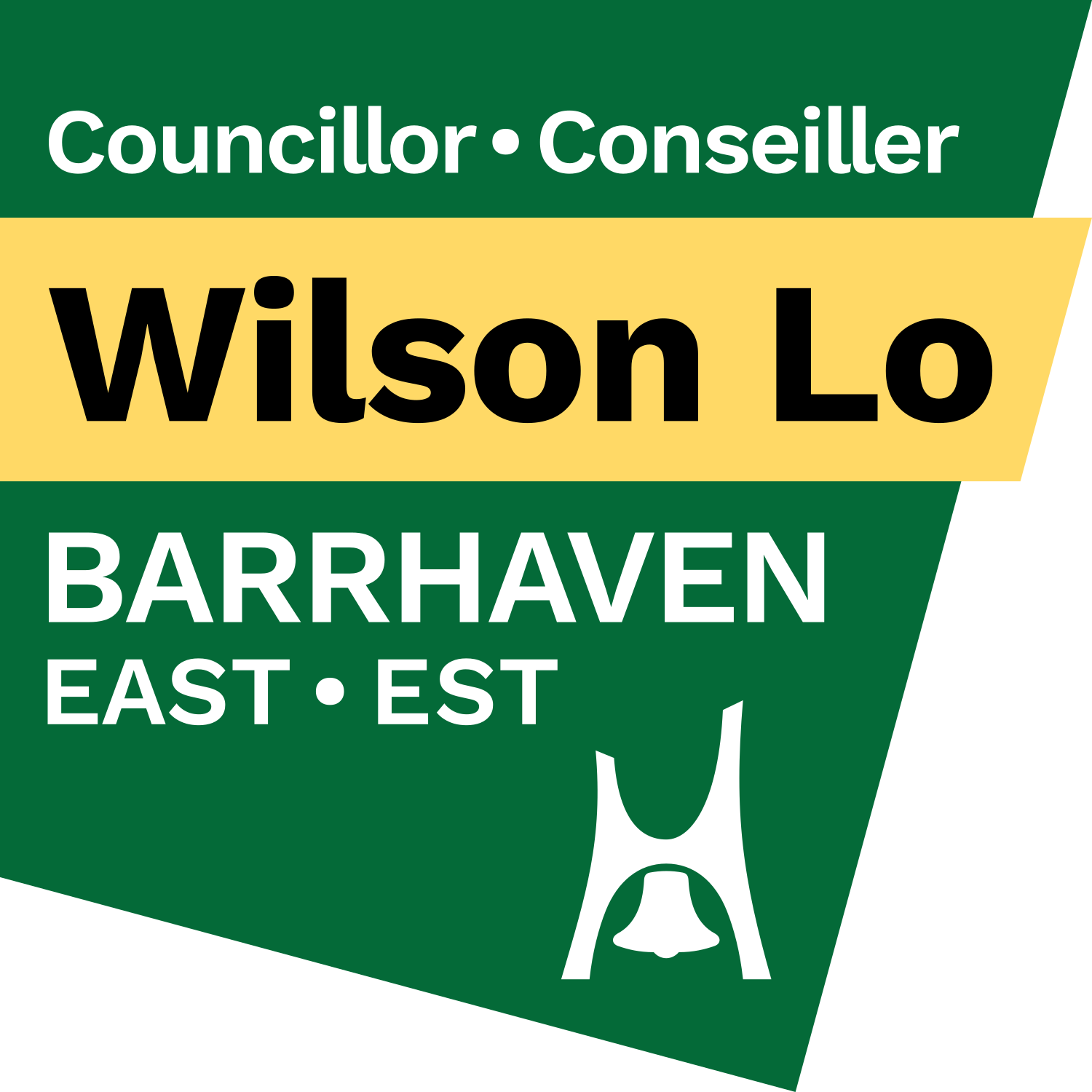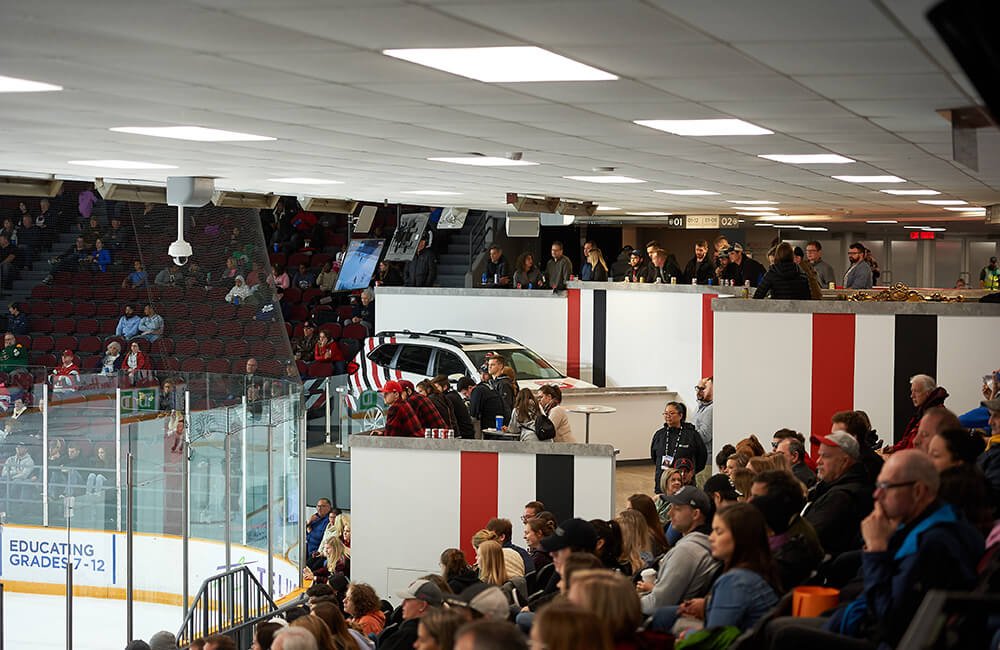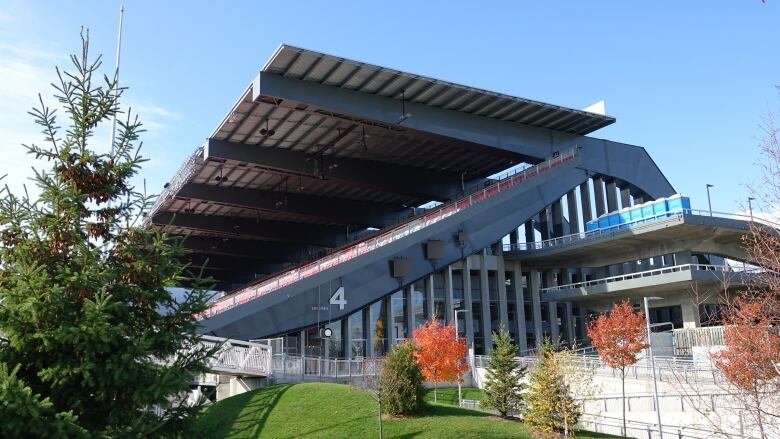Weekly newsletter: October 17, 2023
Welcome to the second of two parts in my Lansdowne long-read.
Last week, I shared Lansdowne’s history, how we got to where we are, and a look into the proposal currently before Council.
This week, we’re taking a deep dive into an Auditor General’s report from 2020 about the waterfall agreement with OSEG, what I like and don’t like about Lansdowne 2.0, next steps for Council, and why I will not be supporting the proposal.
I encourage you to read last week’s newsletter first, as it provides lots of background and history to support much of what’s in this week’s issue, such as the waterfall agreement, details of the Lansdowne 2.0 proposal, and why it’s needed.
Auditor General’s report (2020)
In 2020, the Auditor General assessed the city’s internal accounting processes for the waterfall agreement with OSEG, whether they are designed and operating effectively, and that the City’s contributions and returns on equity are accurately recorded.
The audit’s five objectives were:
Business planning, risk management, performance measurement/reporting
City’s accounting of equity and return on equity
OSEG’s accounting for their share of equity and return on equity
City’s monitoring and oversight of waterfall distribution
City’s monitoring of revenue and expense transactions
Although processes to monitor and validate financial information were established, the report notes some of OSEG’s recordkeeping and waterfall distribution reporting highlight the need for more detailed oversight by the city. The City has also completed only one detailed analysis of the waterfall since Lansdowne was operational in 2014.
One highlighted instance includes an overstatement of OSEG’s additional equity account, which means they have been earning interest above what was agreed to with the City. The report notes the agreement precludes the City to be directly involved in the approval process for OSEG to contribute additional equity.
That additional equity entitles OSEG to additional interest payments through the waterfall scheme, which is placed ahead of the City’s first opportunity to receive returns on its deemed equity and in residuals, possibly reallocating money the city is entitled to.
The longer errors remain uncorrected, the more difficult it becomes to account for them in the future, possibly leading to inaccurate data, incomplete reporting, and difficulties in validation downstream.
In all, the Auditor General made 11 recommendations to the City Manager’s office, mostly relating to improvements of its comprehensive monitoring and validation processes, plus correcting noted errors. The City agreed to all 11 recommendations.
Based on the agreed-upon target dates, eight of 11 recommendations should have been completed, with the remainder expected to be completed by the end of 2024.
The Auditor General's Office is currently working on their follow-up report regarding the implementation status of the recommendations.
Obsolescence
In 2019, OSEG contracted Rossetti, a Detroit-based firm with expertise in sports venues, sustainable design, and urban planning to assess the north side stands and the arena.
Rossetti’s report demonstrated the facility — renovated 2012 to 2014 as part of Lansdowne 1.0 — is functionally obsolete.
Physical obsolescence is the structural soundness and wear and tear of the facility, managed through procuring good construction materials and proper maintenance and repair. However, even with renovations, there are limits to managing physical obsolescence.
Functional obsolescence represents the more experiential, human, and market elements of the building, such as comfort, accessibility, and safety — elements that impact the morale and culture of fans, performers, and employees.
In both cases, obsolescence is classified into curable and incurable, basically a determination of whether the issues can be corrected.
Rossetti’s report highlights several physical and functional elements of the building which are incurable due to financial cost and limits of the physical structure in accommodating these changes.
Most notably, a combination of no insulation and poor ventilation/climate control capacity means the building becomes uncomfortably cold during colder months, wet utilities requiring freeze protection, and humidity levels which have affected the ice surface quality, led to mould growth, and indoor air quality concerns.
The arena also does not meet accessibility standards prescribed by the Accessibility for Ontarians with Disabilities Act (AODA), including insufficient accessible spectator spaces, aisle widths, and elevator access.
From a safety perspective, the seating aisles are too narrow to accommodate railings required by code, and the facility provides less than optimal space per occupant, especially when the temporary retail spaces are factored in.
Furthermore, inadequate operational, functional, and storage space has led to the creation of makeshift storage, office, and locker space— including washrooms converted to locker spaces and the food services office sharing space with dry goods storage.
And that’s just the arena. The report lists more deficiencies in the arena, but also contains every deficiency in the north side stands, which are generally of the same vein.
Rossetti’s obsolescence report raised several red flags and left me with lots of questions. Physical maintenance and repair are expected to be regular occurrences throughout a building’s life, but many of the functional aspects of the building are longstanding and should have been evident by the time of the 2012 Council discussion on whether to renovate or replace the facility.
I think it’s reasonable to expect the functional needs of the building highlighted by the Rossetti report could have been foreseen in 2012, when OSEG and the City made the joint decision to keep to cosmetic improvements to the arena and north stands.
In fact, the AODA, which prescribes accessibility requirements in Ontario, became law in 2005, seven years before that decision was made.
Regardless, we are where we are now, so let’s (finally) dive into the thought process behind my decision to not support Lansdowne 2.0.
What I like
There are actually many things to like about Lansdowne 2.0. As designed and intended, Lansdowne 2.0 will address some of the work already underway from before the pandemic to increase foot traffic and animation to the site.
The new residential addition brings more people “permanently” on site, while the new event centre and north stands will provide fans, employees, and performers with necessary upgrades to improve their experience, safety, and accessibility.
Ottawa will also no longer miss opportunities to host medium-sized events that currently skip the city due to the condition of the existing building.
The economic impact of the project during construction and after construction also stands to benefit the city and surrounding areas through direct capital and operational spending, supporting industries that supply goods and services, and employees spending their wages on consumer goods.
Construction throughout its course is estimated to contribute $574 million to the GDP, $403 million in wages, and almost 5,500 jobs in Ottawa, while operations after construction is estimated to contribute $92 million to the GDP, $76 million in wages, and almost 1,500 jobs in Ottawa every year.
It’s also important to note there will be several downstream benefits Lansdowne 2.0 could deliver to the regional economy, such as additional investments in retail, entertainment, and further residential development.
Despite its dominating presence looming over the historic Aberdeen Pavilion, I was generally indifferent about the third residential tower in the original proposal, but I understand the density on site was reduced in response to the concerns of the surrounding community.
The scaling down of the residential buildings eliminates all 120 units of affordable housing planned for the site. Instead, 10 per cent from the sale of the underground and air rights for the residential buildings, or $3.9 million, will go towards shovel-ready affordable housing projects (while the units at Lansdowne won’t begin construction until at least 2030).
Affordable housing projects that stand to benefit are located across Ottawa, including in locations with better wrap-around supports than Lansdowne. I believe the $3.9 million will go further in other locations than it would at Lansdowne.
Lastly, the waterfall agreement for Lansdowne 2.0 will also be revised so the City and OSEG receive their distributions at the same time, rather than OSEG first. However, like the waterfall agreement for Lansdowne 1.0, what is distributed is still contingent on the site’s performance.
What I don’t like
Risks are generally expected with any significant investment, including those made with public money (your money). However, much of Lansdowne falls outside the core mandate of municipal government, meaning the current proposal is an unnecessary risk with public money.
(Side note: I don’t like using the term “taxpayer,” because it reduces residents to sources of revenue. You’re so much more than that.)
The report includes some changes to the project cost from the original proposal, summarised as follows:
New cost of $419.1 million (increase of $86.5 million)
$312.7 million of that cost will be debt
That debt will be repaid over a 40-year term at $16.4 million per year at 4.25 per cent interest
Seventy-five per cent of the debt servicing will be funded through property taxes from the site
Purely as an accounting exercise, the numbers make sense, and the City would benefit from getting $419.1 million of assets at a cost of only $106.4 million.
However, the numbers hide the fact we will be foregoing $312.7 million in tax revenue over 40 years that would otherwise be used to fund city services like roads, parks, recreation services, and public transit.
What I also didn’t mention is those numbers are all assumptions or based on assumptions (and the hope the provincial and federal governments will contribute $20 million to $50 million in capital funding).
Classes of estimates are typically used to determine costs of projects. The $419.1 million is based on a Class C estimate, which reflects planning level knowledge of the project based on a comprehensive list of requirements and assumptions, including construction experience and market conditions.
The project is expected to proceed through a Class B estimate, which includes an elemental cost analysis based on design of all major systems and the results of site investigations. Class A estimates are basically what goes out to tender and are typically fairly accurate compared to the actual final cost.
Current projections peg the Class A estimate for Lansdowne closer to $500 million.
For comparison, Ādisōke, the new central library’s Class C estimate was $175 million while its Class A estimate is $334 million (in fairness, their journey from Class C to Class A was 2019 to 2021, a much more tumultuous time in history).
Unlike Lansdowne 1.0, whose debt was issued at the same time as taxes began to repay that debt, Lansdowne 2.0 features a six-year offset. The debt will be issued upon the arena and stadium’s completion. As the residential and retail development must wait until the arena and north stands are complete, the City will not begin receiving the full amount of property taxes until 2036.
A special reserve has been created to account for that offset. Contributions to that reserve are set to begin next year. However, it does not appear to consider potential construction delays to any element of the project which can widen the offset.
Lastly, whereas OSEG was responsible for all construction and operational deficits in Lansdowne 1.0, the recommendation from staff is that the city share in the risks. As the city’s funding strategy for Lansdowne 2.0 is dependent on funding sources that are not guaranteed, there is now financial risk to the city.
Other options?
A common narrative so far is doing nothing will cost more long term.
According to the staff report, ongoing maintenance of the arena and north stands would cost $12.5 million annually, which would still have to be replaced eventually. Rather than jointly funded through the partnership, that eventual replacement would be fully funded by the City.
There are also warnings that OSEG could default on the agreement and become unable to contribute to the partnership, leaving the City to operate the site on its own.
But it’s not a binary decision — it’s not just yes or no to Lansdowne 2.0.
One option to consider is to sever the site so the City keeps the public spaces, Aberdeen Pavilion, and the Horticulture Building (assets which are within the city’s core mandate) while the residential, retail, and facilities would be sold to OSEG or another private owner, who would be free to realise the Lansdowne 2.0 plans. The City would still stand to benefit economically and from property taxes.
My position
I cannot support Lansdowne 2.0 in good conscience.
I genuinely like the design and intention of the proposal, but it’s far outweighed by the financial risks and foregone tax revenue meant for city services. The site could be a success and become an economic engine, but public money is not meant for that sort of gamble.
My biggest worries right now are the potential cost increases when the project goes to tender and the potential construction delays throwing the offset debt servicing plan off-balance.
I think it’s worth exploring divesting the City of the parts of Lansdowne that should be privately owned and operated in the free market, while retaining the assets that should stay public.
The consequence shared most with Councillors so far is OSEG will leave and sell its teams if the City does not support the proposal, which to me is a very strong indication it’s not a good deal for the City.
Most importantly, if the proposal was approved and OSEG leaves anyway, the City would have no choice but to assume the remaining debt.
Next steps
The staff report for Lansdowne will come before a joint committee meeting of the Planning and Housing Committee and the Finance and Corporate Services Committee on Thursday 2 November 2023. The meeting will be streamed on the City’s YouTube channel.
If it passes committee, it will rise to a special City Council meeting on Friday, November 10 2023, also to be streamed.







